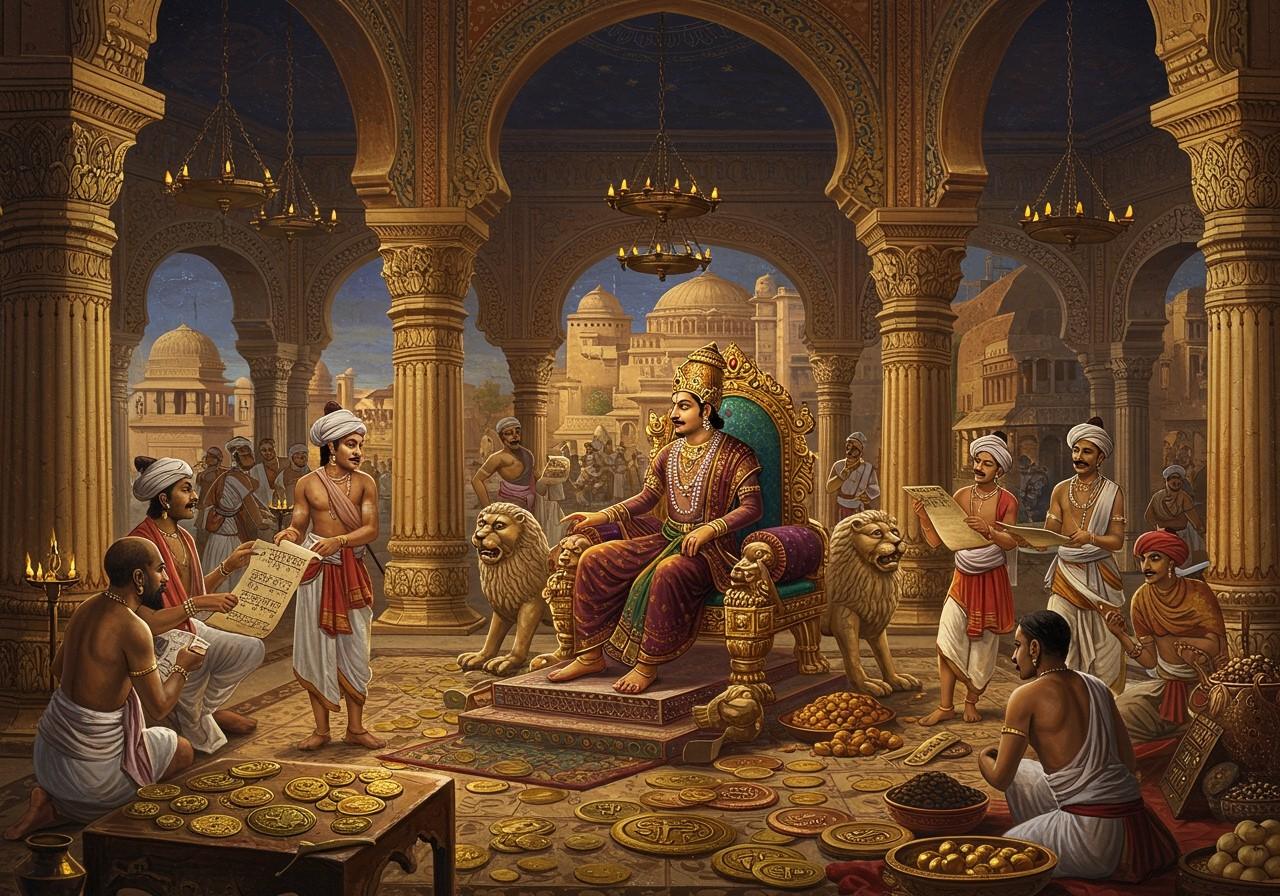
The Gupta Dynasty, often hailed as India’s Golden Age (circa 320-550 CE), stands as a testament to remarkable achievements in governance, commerce, and cultural enrichment. This era witnessed a flourishing of art, science, and literature, leaving an enduring legacy that continues to shape India’s cultural identity. Let’s delve into the administrative structure, economic dynamics, and cultural brilliance of this pivotal period.
Pataliputra: The Heart of the Gupta Empire
Pataliputra, modern-day Patna in Bihar, served as the vibrant capital of the Gupta Empire. Strategically situated on the Ganges River, Pataliputra became a central hub for political administration, trade, and cultural exchange. Its sophisticated urban planning, featuring fortified walls, grand palaces, and efficient drainage systems, reflects the advanced infrastructure of the time.
Unveiling the Gupta Dynasty: Sources of Knowledge
Our understanding of the Gupta Dynasty is derived from a rich tapestry of sources, including archaeological discoveries, inscriptions (like the renowned Allahabad Pillar Inscription which details Samudragupta’s reign), coins bearing intricate designs and inscriptions, and literary texts. These sources offer invaluable insights into the political landscape, social fabric, and economic activities of the era. Accounts from foreign travelers, such as the Chinese Buddhist monk Fa-Hien, further illuminate the daily life and cultural practices of the Gupta period.
The Structure of Gupta Administration: A Blend of Centralization and Local Governance
The Gupta administration was characterized by a hierarchical structure with the emperor at its apex, holding divine titles. A council of ministers assisted the emperor in governance, while the empire was divided into provinces called bhuktis, each governed by an uparika (provincial governor). Further subdivisions included districts known as vishayas, administered by vishayapatis. This system balanced centralized control with local autonomy through village assemblies, contributing to the empire’s stability and prosperity.
A Flourishing Economy: Trade, Agriculture, and Craftsmanship
The Gupta economy thrived on a foundation of robust trade networks, agricultural prosperity, and skilled craftsmanship. Extensive trade routes connected the Indian subcontinent with Southeast Asia and the Mediterranean, facilitating the exchange of commodities such as silk, spices, and precious stones. Agriculture formed the backbone of the economy, supported by advancements in irrigation and crop management. A stable monetary system, based on gold and silver coinage, further fueled economic growth. The Gupta period also witnessed a flourishing of craftsmanship, evident in the exquisite textiles, metalwork, and pottery produced during this era.
Art, Science, and Literature: A Golden Age of Creativity
The Gupta era witnessed a remarkable flowering of artistic, scientific, and literary pursuits. Classical Indian art forms, particularly sculpture and architecture, reached new heights of sophistication, exemplified by the magnificent Ajanta and Ellora cave temples. Scholars like Aryabhata and Varahamihira made groundbreaking contributions to mathematics and astronomy, while significant advancements were also made in medicine and literature. This intellectual and artistic fervor cemented the Gupta period’s status as a golden age in Indian history.
Poojn.in: Connecting You to India’s Rich Cultural Heritage
The Gupta Dynasty’s legacy continues to resonate through India’s rich cultural and religious traditions. Poojn.in, India’s leading online store for cultural and religious goods, offers a wide array of products to help you connect with this vibrant heritage. Explore our curated collections:
-
For Saraswati Puja: Celebrate the goddess of knowledge and arts, revered during the Gupta period, with our authentic Saraswati puja sets, brass idols, and special items for Vasant Panchami. Learn more about Saraswati Puja and Vasant Panchami. Explore our DIY Saraswati Puja guide for beginners.
-
Vishnu Devotion: Honor the Vaishnava tradition prominent during the Gupta era with high-quality Vishnu idols, puja thalis, and ritual items from our extensive collection. Browse our exquisite Radha Krishna Bigraha.
-
Indra Puja Materials: Connect with Vedic traditions prevalent during the Gupta period through our specially curated Indra puja items, including copper vessels and ritual accessories.
-
Laddu Gopal Worship: Continue the tradition of Krishna bhakti that flourished during the Gupta era with our selection of Laddu Gopal shringar items and bhog offerings. Find the perfect Laddu Gopal Murti for your worship.
Visit poojn.in today to discover a wide range of authentic puja items and religious artifacts that honor India’s rich cultural heritage.
The Gupta Dynasty FAQs
Where was the Gupta Dynasty’s capital? The capital was Pataliputra, present-day Patna, Bihar, a strategically important city facilitating trade and communication.
From where do we get information about the Gupta Dynasty? Information comes from various sources: archaeological findings, inscriptions like the Allahabad Pillar Inscription, coins, and ancient texts, including travelers’ accounts and historical records.
How was the Gupta administration structured? The administration was hierarchical, with the king at the top, assisted by ministers and officials governing provinces and districts, balancing central authority with local autonomy.
What was the king’s role? The king held supreme authority, made key decisions, oversaw the administration, and ensured the welfare of the empire.
How was the economy managed? The economy thrived on agriculture, trade, and taxation. Agriculture was the foundation, trade brought wealth and cultural exchange, and taxes provided resources for administration.
What were the main crops? Rice, wheat, barley, and sugarcane were staple crops, crucial for food and trade.
What was trade’s impact? Trade significantly impacted the economy by facilitating the exchange of goods, promoting wealth flow, and fostering cultural interaction.
What types of taxes were levied? Taxes were imposed on land, trade, and produce, with land revenue as a major source of state income.
Conclusion: A Lasting Legacy
The Gupta Dynasty’s influence on India’s history is profound and enduring. Their sophisticated administration, thriving economy, and artistic and scientific achievements created a golden age that continues to inspire. The Guptas’ legacy serves as a testament to the transformative power of effective governance, economic prosperity, and cultural flourishing.


